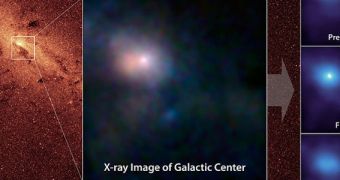With the new fiscal year scheduled to begin on October 1, officials with the American space agency are struggling to make do with the level of funding the White House has proposed for NASA. Included in this proposal are funds for a series of astrophysics missions, which cost the agency around $65 million (€47 million) annually. A Senior Review panel will meet this June to discuss this involvement.
At this point, NASA is around $10 million (€7.2 million) short of securing the proper funding levels. Unless some extra money is found soon, the agency will need to reduce its involvement with some of these projects, or retire from them altogether. Six of the nine projects are owned by the agency, while three are international in nature, and feature NASA as a partner. All of them are very important.
The American projects are the Spitzer Space telescope, the Swift Telescope, the Nuclear Spectroscopic Telescope Array (NuSTAR), the Wide-field Infrared Survey Explorer (WISE), the Fermi Gamma-Ray Space Telescope and the K2 mission, a planned successor to the planet-hunting Kepler Telescope, Space News reports.
Two other projects are led by the European Space Agency (ESA), but feature significant NASA involvement. These are the XMM-Newton X-ray observatory and the Planck Space Telescope. The latter is decommissioned, but its science team is still analyzing the data it collected. The Suzaku X-ray telescope operated by the Japan Aerospace Exploration Agency (JAXA) is the ninth mission.
When the NASA Senior Review Panel meets up in June, experts will discuss how to best manage the money the agency has available, in terms of supporting these projects. We will keep you updated as the situation develops.

 14 DAY TRIAL //
14 DAY TRIAL //